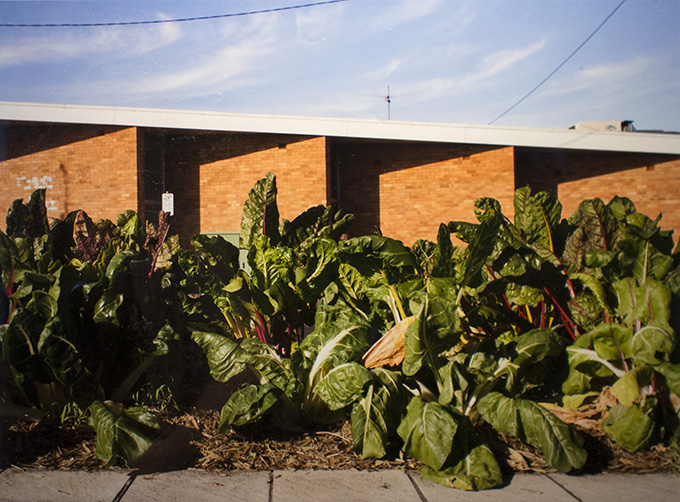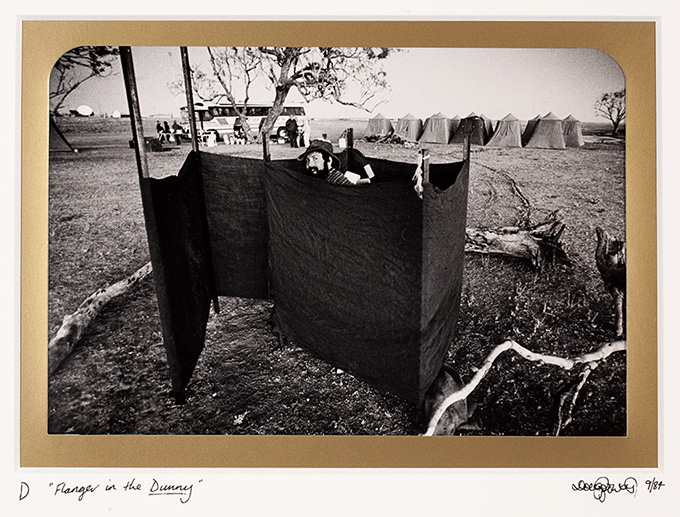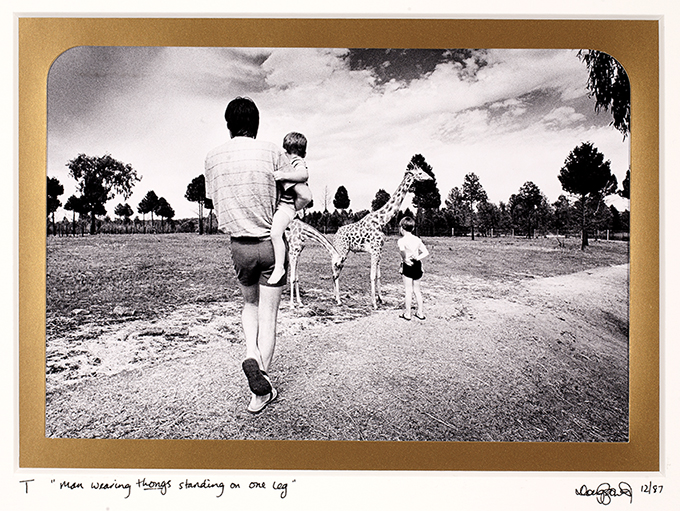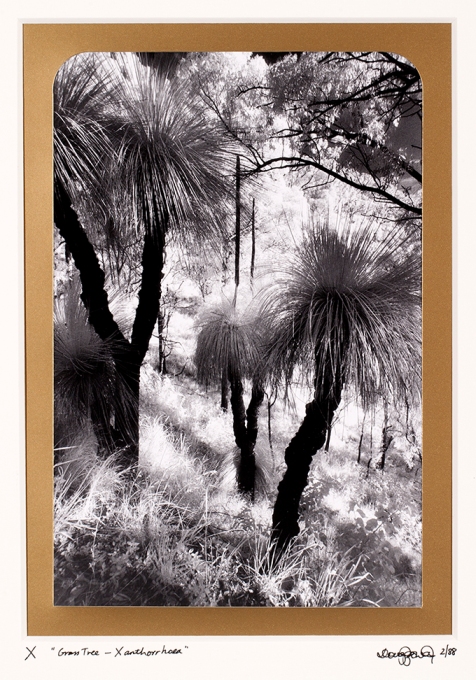Archive for December 2013
FROM SMALL THINGS … : Queensland Small Towns Documentary Project
.
Queensland Small Towns: Documentary Project
Brisbane Powerhouse, 12 November to 1 December, 2013
.
Queensland’s regional areas are fast becoming the most common subject for the scrutiny of the photodocumentary image-makers. In August the Central Queensland Project exhibition was shown at the Powerhouse in Brisbane and now, only a few months later, another show entitled Queensland Small Towns: Documentary Project is hung in the same venue. This new contribution to the documentation of regional communities is a student/lecturer project initiated by the three big Institutions: University of Queensland, Queensland University of Technology and the Queensland College of Art (QCA).
With the support of academic staff, students of these photography and photojournalism faculties descended on the Queensland towns of Moranbah and Dalby. The exhibition’s coordinator Earle Bridger from QCA, chose these two regional localities because of the impact of mining. To add contemporary photodocumentary rigor to the activity, professional photographers: Russel Shakespeare, Adam Ferguson and Shehab Uddin were collaborators and advisors to the fieldwork.
The project’s mission, as stated in exhibition press, was to capture: ‘The stories, characters and everyday lives of people in Queensland outback towns’1. They further claim that: ‘this unique photo-documentary project [will] reflect[s] the changing face of rural Queensland.’ 2
This project was instigated to provide an in-field experience for the students. They were charged with the challenge of avoiding the traditional news story and to: ‘capture a visually appealing and thought-provoking narrative to a high-professional standard.’ 3
The exhibition at the Brisbane Powerhouse was extensive–the photographic images and video interviews were shoehorned into every available space. This made viewing of the show a little like a ‘hide and seek’ exercise. Its curation within this space created a fragmented view confusing the holistic flow of the exhibition.
.
Under the tutelage of lecturers and the photodocumentary practitioners assigned the project, as well as study, research and personal preparation, one may think that these primary concerns are well covered. However there is one other critical factor–The preconditioning from existing media overexposure and hype. This rhetoric includes the following: That these small towns, besieged by the extraordinary pressures of the extractive mining industries, are places in a state of flux between the perceived benevolent farming practices of the past and the boisterous bully of mining. These once sleepy rural places are now zones of friction between itinerant workers, inadequate infrastructure, fractured families and ‘fracked’ communities. Any documentary commentator must not let this prejudice impede their impartial reportage. Furthermore one must consider methodological and ethical issues around the selection of subject/s, the gaining of access and trust and the authenticity of the resulting work.
All that aside, what of the exhibition Queensland Small Towns: Documentary Project? What I found was a proficient and diverse presentation of contemporary photodocumentary work. Mixed in amongst the contemporary trend of the bland document aesthetic were emotive and sensitive photographs of private lives in difficult times. Images were grouped as mini photo-essays enabling a concept or a subject to be pursued.
Importantly the opportunity provided to these students and the lecturers to get into the field is one of the best lessons they both can have. As mentor Russell Shakespeare comments: ‘I think these projects are so important on every level. To get students out working on self generated stories and also for the Town to have a group of photographers recording “History” as they see it, and then to be archived by the State Library, hopefully this project will continue on throughout other Qld Towns in years to come.’ 4
Unlike the financial reality that students may encounter in their post graduation world, a $50,000 Arts Queensland Creative Partnership Grant funded the Small Towns Documentary Project5. And fittingly, considering the generous budget for the project, the photographs and video works will be gifted to the people of Queensland by their inclusion in the permanent collection of the State Library of Queensland.
This work will add to a significant archive for the future, however I’m concerned about the ‘thought-provoking narrative’ and its importance now. The exhibition at the Brisbane Powerhouse only marginally serves the purpose and power of contemporary documentary work … to communicate. No mention is given to exhibitions in Dalby and Moranbah–the communities that gave the project subject matter to image and document. The project is also left wanting in the application of eJournalism platforms like YouTube, Facebook, blogs and websites. Googling the project one encounters variations of the same succinct media release without external links to any online archive that says what was done, who did it and most importantly, provide a space for the communities documented to share and extend their stories.
The domain of the photodocumentary practitioner is not just the creation of material for the archive–its perhaps more important role is now, being in and of the times, and the communities and people who shared stories and submitted their lives to the gaze of these lens men and women. These stories are required now to inform, to cajole, to stir commentary and demand corporate and political acknowledgement, response and action. That’s where documentary photography does its best work …
Dr Doug Spowart
December 27, 2013
.
1 http://brisbanepowerhouse.org/events/2013/11/12/queensland-small-towns-photo-documentary-project/
2 Ibid
3 http://www.uq.edu.au/sjc/qld-towns-project
4 Online correspondence from Russell Shakespeare
5 http://www.linkedin.com/pub/earle-bridger/b/521/737
.
What follows are images and videos from the exhibition.
.
Please Note: The photographs in this exhibition were presented as multiple image groups – only single images represent the photographer’s body of work. I have included the photographer’s statement under most images to give an understanding of their project and the context for the work. Most images in this review are from camera exposures within the exhibition environment and may not represent the image/s accurately due to reflections and uneven lighting.
.

“Al Phillips, Drilling Supervisor + Chris Mannion, Driller, Moranbah” … Photo: Adam Ferguson and Brodie Standen, 2013
.

Potential buyers survey a pen of cattle at the Dalby sale yards. The weekly auctions are Australia’s larget one-day cattle sale, with over 6,000 head of cattle passing through each week.…Photo: Kimberley McCosker
.

“Joyce Coss”
83 years old with “Waddles” her Sliky Cross.
63 years living in Warra.
Photo: Russell Shakespeare 2013

Beyond the sporting ovals, on the outskirts of Moranbah, Sean lives in a trailer. The trailer is powered by a petrol generator and drinking water tanks are filled at a family member’s house. He lives there by choice, a house has “too many walls”. Separated from his wife Sean shares custody of their 5 boys. Charlie, Darcy, Bailey, Harley, & Riley spend each weekend with their Dad and I was fortunate enough to spend a few days with them while they visited over school holidays. With Moranbah as a backdrop, a town where much of the population’s main objective is obtaining and retaining material wealth, getting rich and getting out, Sean’s lifestyle begs a closer look at what separates need and want. I would like to thank Charlie, Darcy, Bailey, Harley, Riley & Sean for their hospitality & allowing me to tag along with them. Photo: Cory Wright
.
.

The Wilkie Creek Rural Fire Brigade in conjunction with other local fire brigades, coordinate necessary hazard reduction fires, as well as keeping life threatening fires at bay during the high risk summer season. Pictured [in my project] are their lives on a daily basis, as well as their involvement in a hazard reduction fire completed near Lake Broadwater in October, 2013. Photo: Eva Turek-Jewkes
Four videos by students from the University of Queensland School of Journalism and Communication:
.
.
.
.
.

“Grassdale Feedlots”
A curios 2 year old, 620kg Hereford steer in Grassdale Feedlots state of the art facility (to extreme left of series). Pens are cleared every 50 days as part of the facilities self-audited quality and health assurance measures. World class traceability systems allow staff to track, monitor and isolate specific data on each individual beast, including birth date, purchase date and origin, weight, breed, feeding ration and medical record. Established in 2008, Grassdale Feedlot is a 13,000 acre property 30kms south of Dalby centre. Currently with over 38,000 head of cattle and a capacity of up to 50,000 head, the feedlot boasts one of the largest and most technologically advanced feedlot facilities in Australia. The estimated $60 million facility employs over 50 staff and is a major driver in the economic stability of the Dalby, Millmerran and Chinchilla region and remains at the forefront of grain-fed beef production in Australia employing some ground breaking technologies in milling and feeding processes. … Photo installation: Victoria Nikolova
.
.
.

“Some Trash, Others Treasure”
Pioneer Park Museum in Dalby seems a place suspended in time, somewhere around the beginning of the 20th century. Located on Black Street – once very quiet and peaceful but nowadays one of the main truck parking spots in town – the museum is a magical space with colonial houses and antique machinery, accompanied by rustling of leaves and bird’s trill. Elaine and Daniel Fox, the main founders, have lived on-site for almost 11 years, taking care of this magical place on a daily basis. They began 23 years ago with only seven antique tractors. Today, they can boast of one of the largest collections of operating antique agricultural machinery in Queensland – some of which date back to the early 19th century. Together with a few passionate volunteers they keep the place alive and once a year, during Field Weekend, the town of Dalby travels in time to discover again the old knowledge, tradition and way of living of their ancestors. The Museum is mostly financed by an annual fund from the local government, entry tickets, and the craft shop income and the Field Day. However, it is hard enough to keep it working, with a fast developing technology and little funding; they struggle to keep their museum operating in the modern, quickly changing mining town, that Dalby has become. … Photo: Kasia Strek
.

“No Access”
This work is not against mining. For whether it be the computers we use to stay connected, the solar panels we purchase that make us feel socially responsible or the cameras I use to tell stories, mining is embedded into the fabric of the 21st century. The debate should not be whether or not to mine, but rather how is mining to be controlled. What became obvious in Moranbah was that combined the mining companies controlled the political and social agendas. Through ostensibly generous salaries, subsidized housing and rare community donations mining companies have become the pushers and the population the addicts. Mine workers are afraid to speak to strangers for fear they are the media. Criticism is only whispered when in the company of friends. The right to have an opinion that may differ from the company has been severely eroded. To express that opinion puts job and home at risk. No Access argues that Australia should retain exclusive rights to its resource management. It argues for controlled mining. But most of all it presents a snapshot of the liberties we have sold in order to satisfy those who seek to maximize profits and minimize social responsibility. Moranbah. David Lloyd. 2013.
.
.
The photographers and video producers retain all copyright in their images and presentations. Text and installation photographs © 2013 Doug Spowart
.
.







































